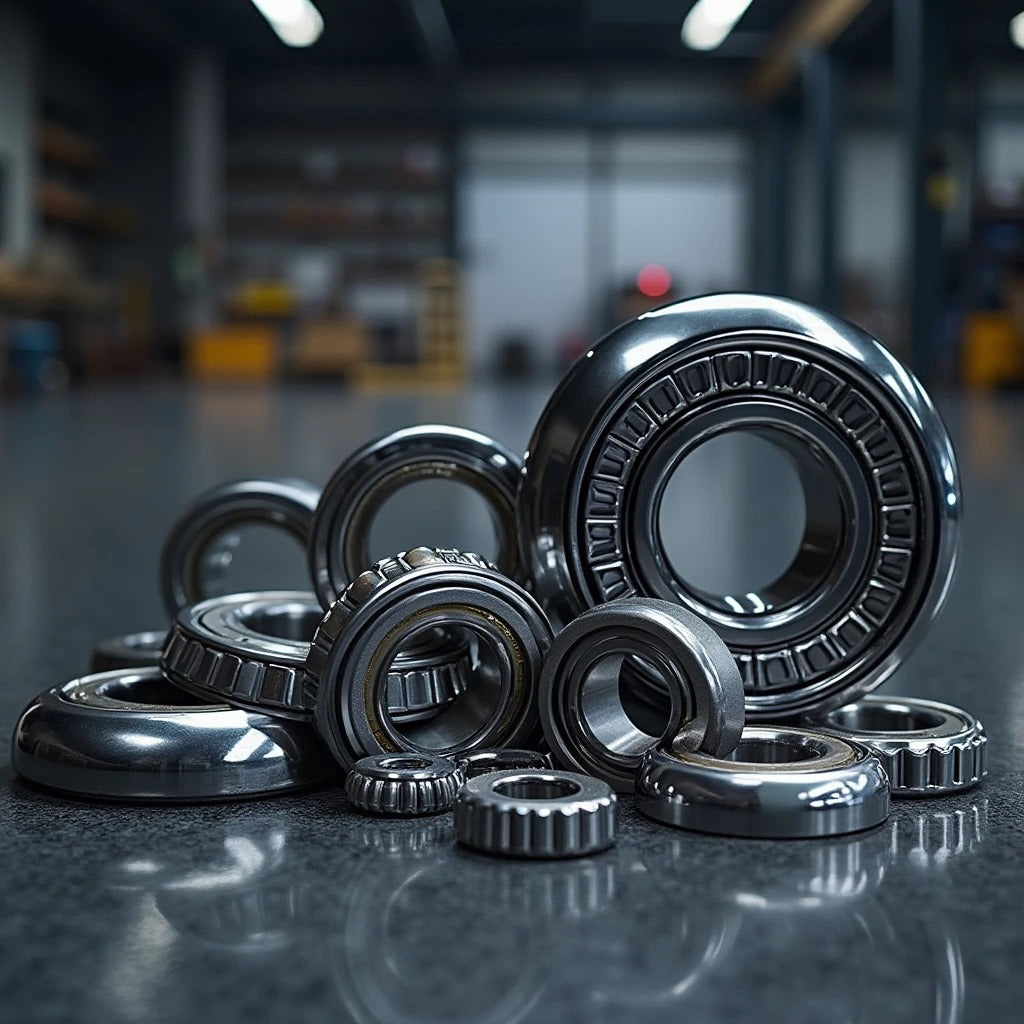What should be considered when using bearings?
by
oguzhan melek
30 Oct 2024
When using bearings, several factors should be considered to ensure optimal performance and longevity:
1. Load Capacity: Determine the maximum load the bearing will need to support, including dynamic and static loads.
2. Speed Rating: Check the bearing's speed limitations to prevent overheating and premature failure.
3. Type of Bearing: Choose the appropriate bearing type (e.g., ball, roller, thrust) based on the application's specific requirements.
4. Lubrication: Select the right lubricant (grease or oil) to reduce friction and wear, and consider maintenance intervals for re-lubrication.
5. Operating Environment: Assess conditions such as temperature, humidity, dust, and exposure to chemicals, which can affect bearing performance.
6. Alignment: Ensure proper alignment during installation to avoid uneven wear and premature failure.
7. Mounting Method: Choose the appropriate mounting technique (e.g., interference fit, clearance fit) to secure the bearing in place.
8. Vibration and Noise: Monitor for excessive vibration and noise, which can indicate issues such as misalignment or wear.
9. Material Selection: Consider the bearing materials based on environmental conditions, corrosion resistance, and required strength.
10. End-of-Life Indicators: Be aware of signs of wear or failure, such as increased noise, heat, or movement, to facilitate timely replacement.
By addressing these factors, you can maximize the effectiveness and lifespan of bearings in your applications.
1. Load Capacity: Determine the maximum load the bearing will need to support, including dynamic and static loads.
2. Speed Rating: Check the bearing's speed limitations to prevent overheating and premature failure.
3. Type of Bearing: Choose the appropriate bearing type (e.g., ball, roller, thrust) based on the application's specific requirements.
4. Lubrication: Select the right lubricant (grease or oil) to reduce friction and wear, and consider maintenance intervals for re-lubrication.
5. Operating Environment: Assess conditions such as temperature, humidity, dust, and exposure to chemicals, which can affect bearing performance.
6. Alignment: Ensure proper alignment during installation to avoid uneven wear and premature failure.
7. Mounting Method: Choose the appropriate mounting technique (e.g., interference fit, clearance fit) to secure the bearing in place.
8. Vibration and Noise: Monitor for excessive vibration and noise, which can indicate issues such as misalignment or wear.
9. Material Selection: Consider the bearing materials based on environmental conditions, corrosion resistance, and required strength.
10. End-of-Life Indicators: Be aware of signs of wear or failure, such as increased noise, heat, or movement, to facilitate timely replacement.
By addressing these factors, you can maximize the effectiveness and lifespan of bearings in your applications.
Sample Block Quote
Praesent vestibulum congue tellus at fringilla. Curabitur vitae semper sem, eu convallis est. Cras felis nunc commodo eu convallis vitae interdum non nisl. Maecenas ac est sit amet augue pharetra convallis.
Sample Paragraph Text
Praesent vestibulum congue tellus at fringilla. Curabitur vitae semper sem, eu convallis est. Cras felis nunc commodo eu convallis vitae interdum non nisl. Maecenas ac est sit amet augue pharetra convallis nec danos dui. Cras suscipit quam et turpis eleifend vitae malesuada magna congue. Damus id ullamcorper neque. Sed vitae mi a mi pretium aliquet ac sed elitos. Pellentesque nulla eros accumsan quis justo at tincidunt lobortis deli denimes, suspendisse vestibulum lectus in lectus volutpate.



